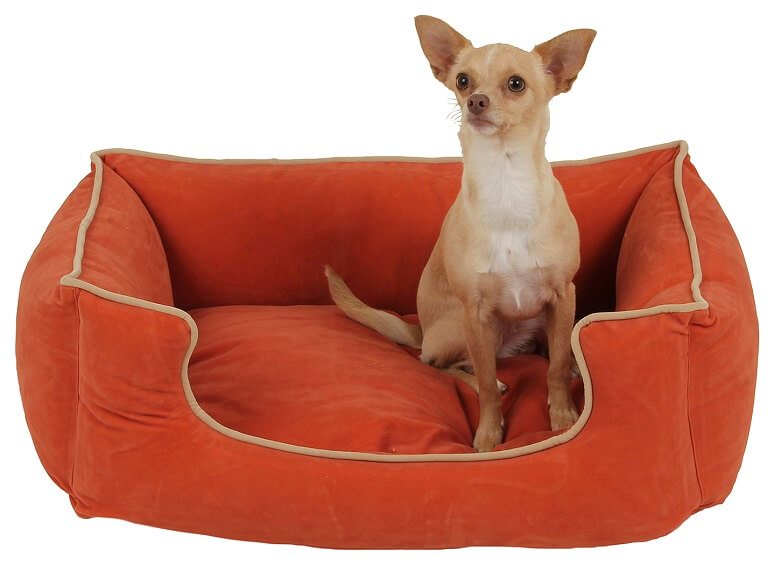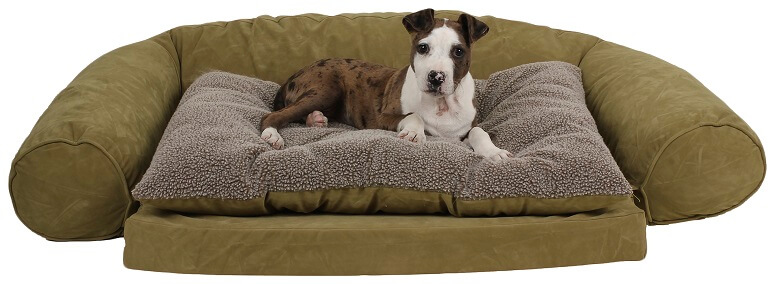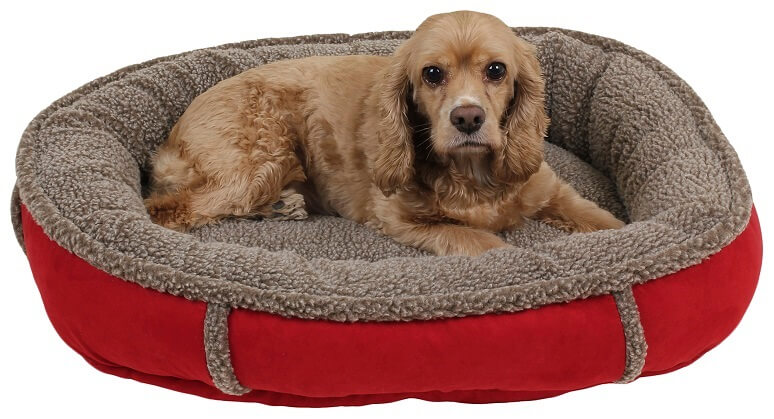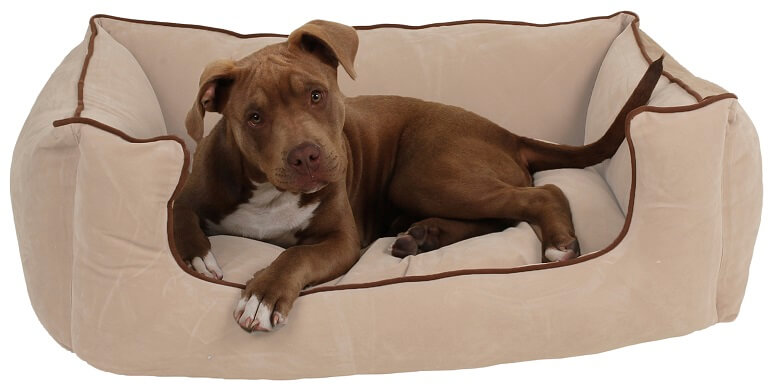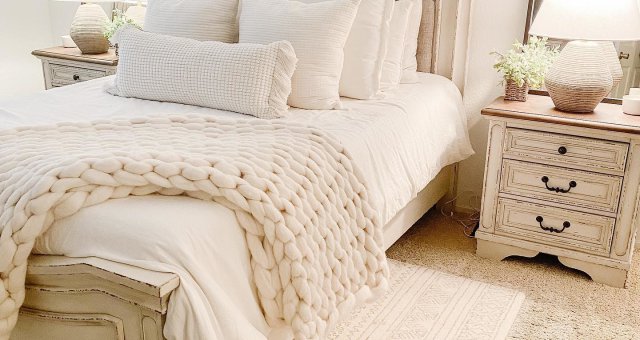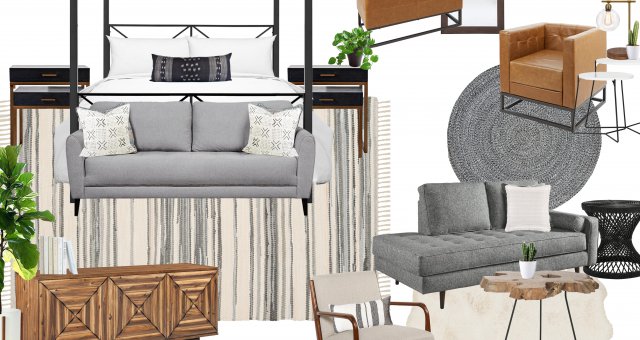Just let sleeping dogs lie, right? Although a dog can sleep anywhere, there are huge benefits for both dogs and humans when they sleep in their own beds. Just as we invest in a good mattress for quality sleep, we should also invest in a good dog bed for our fur-babies. After all, they spend even more time sleeping then we do and deserve a comfortable spot to call their own.
Benefits of a Dog Bed
The best dog beds will provide insulation, cushion tired joints and give your pup a feeling of security. A bed—along with a collar, leash and food bowls—should be at the top of the list for any new pet parent. And if your dog has been ruffing it on the floor, they’ll be all the more appreciative of their new, cozy digs.
Here are 6 top reasons why dog beds are important:
1. They support your dog’s joints
Whether your dog is young or elderly, their bodies can use the contouring comfort of a bed. Hard surfaces are harsh on young growing bodies, and the discomfort could cause a lack of sleep—potentially leading to behavioral issues (and who wants to listen to howling and whining throughout the night?) On the flip side, elderly dogs are much more sensitive to hard surfaces and greatly benefit from the support that dog beds provide for their worn joints.
2. They provide proper insulation
The floor isn’t the coziest spot—during the winter it can get frigidly cold, and it doesn’t feel much better during hot summers. Temperature extremes make it hard to sleep well, but a proper dog bed can easily alleviate the problem. Most will provide cozy warmth they need for cold nights. If you live in a region that experiences frequent hot weather, a cooling pad atop a bed can do wonders for dogs with thick, heavy coats.
3. Dogs need a space of their own
Just like all living things, your dog needs a space where they feel safe, protected and relaxed. They love having a valued place they can call their own. It’s a way of showing that they’re more than just a pet, but also family.
4. It can help preserve your furniture
Let’s face it—no matter how clean your dog is, things can easily go awry. Whether it’s shedding, drool or tracked paw prints, our faithful friends aren’t the tidiest creatures. Of course we can never stay mad at them for too long (who can resist puppy kisses?), but we can take small measures to ensure the longevity of our pricey purchases. By giving your dog a designated space to sleep and lounge out in, you’re reducing the amount of time they spend on the sofa or your bed. Longer-lasting furniture and a happier pup? Sign us right up.
5. Having a dog bed can prevent injury
No matter how easy they make it look, jumping up and over a bed isn’t a simple task. High-intensity movements are a gateway to injury—especially as dogs age. A comfortable space that’s low to the ground and easily accessible is the ideal choice.
6. More comfortable sleep for the both of you
There’s little that compares to the warm feeling of cozying up with your fur-baby. However, what feels the best emotionally might not always be the best physically for your pet. If you choose to sleep with your dog when they’re young, they can struggle with sleeping alone when you’re not there. If you go on a vacation, this can put a lot of stress on your dog. And on another note—the feeling of playful paws walking over you doesn’t get any more pleasant as they get bigger. To save yourself the trouble, it’s best give your dog their own sleeping quarters, so both of you can get a good night’s sleep.
How to Choose the Best Dog Bed
Now that you know all the benefits of dog beds, the inevitable question arises: how do you choose the best one? Here are some tips to make shopping simple.
1. Determine the Size
This might seem like an easy one, but it can actually be tricky to choose the right size—especially if you’re shopping online or in-store without your dog. To make the process easier, take measurements and weigh your dog. Try to measure your dog’s length from nose to tail. You can compare these measurements with dog bed dimensions, which is especially helpful if your dog prefers sprawling out rather than curling up. Weight is another important factor since certain beds are built with denser, longer-lasting materials for larger dogs.
2. Narrow Down the Style
Is your dog a seemingly natural yogi that jumps into down-dog and puppy pose all the time? If so, your dog will enjoy a flat dog bed to freely stretch without restricting walls. However, if they prefer the secure feeling of being cradled or get cold easily, then a nested dog bed might be a better option.
3. Prioritize Important Features
If your dog is elderly or suffers arthritis pain, then an orthopedic dog bed with memory foam can help relieve pressure. Perhaps your pup is a (darling) drooler, or experiences incontinence—a bed with easy-clean material would make both of your lives so much easier. If you simply want to provide a warm, cozy spot, consider one with nappy texture or a smooth microfiber bed.
4. Consider the Quality
After all the hard work of narrowing down the best bed for your dog, why skimp out on quality? Dogs sleep an average of 12 hours a day, so this new bed will get lots of use. Instead of replacing ruined dog beds every year, buying a high-quality bed that lasts is a paws-itively perfect way to make you and your fur baby happier than ever.
So, does your dog agree? We’d love to hear all about it, and see pictures of them lounging! Share the love with the hashtag #MyAshleyHome for a chance to be featured.




